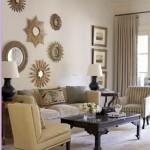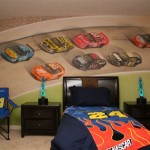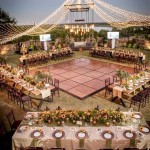How To Decorate An Open Plan House
Open plan living has become a popular architectural design choice, characterized by the merging of multiple living spaces into a single, large area. These spaces typically combine the kitchen, dining, and living rooms, creating a flexible and social environment. However, decorating an open plan house presents unique challenges. Successfully navigating this layout requires careful consideration of space definition, furniture selection, color palettes, and overall design cohesion. Failure to address these elements can lead to a space that feels disjointed, overwhelming, and lacking in both function and aesthetic appeal.
The key to decorating an open plan house lies in understanding how to create distinct zones within the larger space while maintaining a sense of unity. This is achieved through strategic planning and the implementation of design principles that guide the eye and define purpose. A well-decorated open plan home maximizes the benefits of the layout, fostering interaction and creating a comfortable and stylish living environment.
Defining Zones with Furniture Arrangement
One of the most crucial aspects of decorating an open plan house is defining distinct functional zones within the larger space. Furniture arrangement plays a pivotal role in achieving this separation without erecting physical barriers. The strategic placement of furniture helps to delineate the living area from the dining area, or the kitchen from the living space, thereby providing visual and functional separation.
Consider using large pieces of furniture, such as sofas or bookshelves, as room dividers. Placing the back of a sofa to face the dining area immediately creates a visual break and defines the living space. A tall bookshelf can serve a similar purpose, offering storage while simultaneously partitioning the area. The bookshelf also allows for some light to filter through, maintaining the open feel of the space. Ensure that the furniture selected for this purpose is appropriately scaled to the room to avoid overwhelming the area or appearing disproportionate.
Rugs are another effective tool for defining zones. Place a large area rug under the dining table to anchor the dining space and visually separate it from the surrounding areas. Similarly, a rug in the living area helps to define the seating arrangement and create a cozy, intimate space. Using different rug patterns and textures can further enhance the sense of separation between zones. For instance, a patterned rug in the living area can contrast with a more neutral, solid-colored rug in the dining area.
Floating furniture arrangements, where furniture is pulled away from the walls, also contribute to zone definition. This creates pathways and circulation areas, further distinguishing the different functional spaces within the open plan layout. Avoid pushing all furniture against the walls, as this can make the space feel less inviting and less defined. Instead, experiment with different furniture placements to find the arrangement that best suits your needs and the flow of the space.
Consider the functionality of each zone when arranging furniture. The living area should be conducive to relaxation and conversation, with comfortable seating and a focal point such as a fireplace or television. The dining area should be arranged to facilitate easy conversation and accommodate the number of people you typically entertain. The kitchen area requires adequate counter space and storage for efficient food preparation. By carefully considering the function of each zone, you can create a furniture arrangement that is both aesthetically pleasing and practical.
Maintaining Cohesion Through Color and Material Choices
While defining zones is essential, maintaining a sense of cohesion is equally important. This is achieved through the careful selection of color palettes and materials that tie the entire open plan space together. A cohesive color scheme creates visual harmony and prevents the space from feeling disjointed or chaotic. Choosing a limited palette and repeating colors throughout the different zones helps to unify the overall design.
Start by selecting a base color or neutral tone that will serve as the foundation for the entire space. This color should be used on the walls, flooring, and large pieces of furniture. Neutral colors such as white, beige, and gray provide a versatile backdrop that can be easily complemented with other colors and textures. Once you have established the base color, introduce accent colors to add visual interest and personality. These accent colors can be used in smaller doses, such as on cushions, throws, artwork, and accessories.
Consider the psychological effects of different colors when selecting your palette. Warm colors such as red, orange, and yellow create a sense of energy and excitement, while cool colors such as blue, green, and purple evoke feelings of calm and relaxation. Choose colors that align with the overall mood and atmosphere you want to create in your open plan house. For example, you might use warm colors in the living area to create a cozy and inviting space, and cool colors in the dining area to promote a sense of relaxation during meals.
In addition to color, material choices play a significant role in creating a cohesive design. Use similar materials throughout the open plan space to create a sense of continuity. For example, if you have hardwood flooring in the living area, consider using the same type of flooring in the dining area and kitchen. Alternatively, you can use complementary materials that share a similar aesthetic. For instance, you might pair hardwood flooring with tile that has a similar color and texture.
Pay attention to the finishes of different materials as well. Consistent finishes, such as matte or glossy, can help to unify the space. For example, if you have matte-finished cabinets in the kitchen, consider using matte paint on the walls in the living and dining areas. Mixing and matching materials can add visual interest, but it is important to do so thoughtfully to avoid creating a cluttered or disjointed look.
Introduce texture to add depth and dimension to the open plan space. Use a variety of textures in your furniture, fabrics, and accessories to create visual interest and tactile appeal. For example, you might pair a smooth leather sofa with a textured throw and a woven rug. Mixing different textures can add a sense of richness and complexity to the design, while maintaining a cohesive overall look.
Lighting as a Unifying and Defining Element
Lighting is a crucial element in decorating an open plan house, serving both to unify the space and define distinct zones. A well-planned lighting scheme can enhance the overall aesthetic of the home while also providing functional illumination for different activities. Layering lighting is a technique that involves combining different types of lighting to create a balanced and versatile lighting plan.
Ambient lighting, also known as general lighting, provides overall illumination for the entire space. This can be achieved through recessed lighting, chandeliers, or pendant lights. Ambient lighting should be bright enough to illuminate the entire space, but not so harsh that it creates glare or discomfort. Dimmers can be used to adjust the intensity of ambient lighting to suit different moods and activities.
Task lighting provides focused illumination for specific tasks, such as reading, cooking, or working. Task lighting is essential in areas where these activities take place, such as the kitchen, dining area, and home office. Under-cabinet lighting in the kitchen provides ample illumination for food preparation, while a desk lamp in the home office provides focused light for reading and writing. Pendant lights over the dining table can provide both ambient and task lighting for meals.
Accent lighting is used to highlight specific features of the space, such as artwork, architectural details, or decorative objects. Accent lighting adds visual interest and creates a sense of depth and dimension. Track lighting or spotlights can be used to highlight artwork on the walls, while uplighting can be used to accentuate architectural features such as columns or fireplaces. Accent lighting can also be used to create a mood or atmosphere, such as by highlighting a decorative object with a soft, warm light.
Use different types of lighting to define zones within the open plan space. For example, you might use pendant lights over the dining table to define the dining area, while using floor lamps and table lamps in the living area to create a cozy and inviting atmosphere. The kitchen area might feature a combination of recessed lighting, under-cabinet lighting, and pendant lights over the island or breakfast bar. Varying the type and intensity of lighting can help to visually separate the different zones within the open plan layout.
Consider the color temperature of the light bulbs you use. Warm white light (2700-3000K) creates a cozy and inviting atmosphere, while cool white light (3500-4100K) provides brighter and more energetic illumination. Use warm white light in the living and dining areas to create a relaxing atmosphere, and cool white light in the kitchen and home office to provide ample illumination for tasks. Consistent color temperature throughout the open plan space can help to unify the overall design.
Natural light is also an important consideration. Maximize the amount of natural light that enters the space by keeping windows clear and unobstructed. Use sheer curtains or blinds to filter the light if necessary, but avoid heavy drapes that block natural light. Natural light can brighten up the space and create a more inviting atmosphere. It can also help to connect the interior of the home with the outdoors.

How To Decorate Your Open Floor Plan Like A Pro Interior Design Home Staging Jacksonville Fl Interiors Revitalized

How Do You Decorate A Large Open Floor Plan Houseplans Blog Com

Decorating Your Open Floor Plan Brock Built

How To Decorate Your Open Floor Plan Christopher Companies
:strip_icc()/open-floor-plan-design-ideas-13-proem-studio-white-oak-3-57715775317c4b2abc88a4cefa6f06b7.jpeg?strip=all)
22 Open Floor Plan Decorating Ideas Straight From Designers

Ep 16 How To Decorate Your Open Concept Floorplan Successfully Like A Design Boss

8 Open Plan Mistakes And How To Avoid Them

Decorating Your Open Floor Plan Brock Built

How Do You Decorate A Large Open Floor Plan Houseplans Blog Com

8 Open Plan Mistakes And How To Avoid Them
Related Posts







